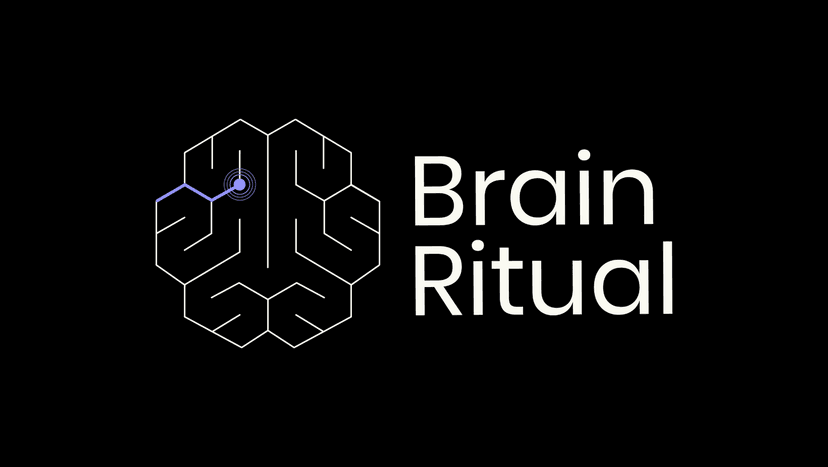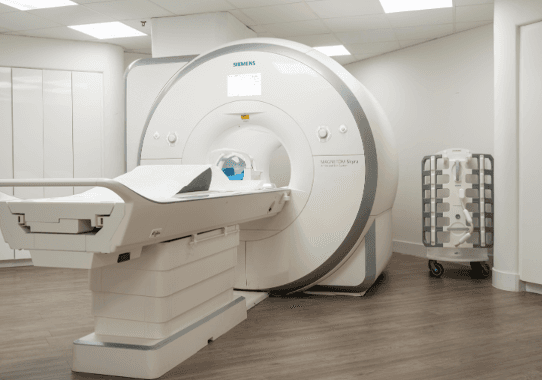The endocannabinoid system (ECS) is a vital part of our bodies, helping to keep everything in balance. Discovered in the early 1990s, scientists found that the ECS is involved in many important processes, like mood, pain, and the immune system. This system is made up of special receptors, endocannabinoids, and enzymes. Understanding how the ECS works can help us find new ways to treat different health problems.
Key Takeaways
- The endocannabinoid system helps regulate mood, pain, and immune responses.
- The ECS includes cannabinoid receptors, endocannabinoids, and metabolic enzymes.
- Diet, exercise, and meditation can influence how well the ECS works.
- Targeting the ECS may offer new treatments for diseases like neurodegenerative disorders.
- Research on the ECS is ongoing, with many exciting possibilities for future therapies.
Components of the Endocannabinoid System
Cannabinoid Receptors
Cannabinoid receptors are proteins found on the surface of cells. They play a key role in the endocannabinoid system (ECS). The two main types are CB1 and CB2 receptors. CB1 receptors are mostly found in the brain and central nervous system, while CB2 receptors are more common in the immune system and peripheral organs. These receptors help regulate various physiological processes by interacting with endocannabinoids.
Endocannabinoids
Endocannabinoids are molecules made by our bodies. They are similar to cannabinoids, which are found in cannabis. The two main endocannabinoids are anandamide and 2-arachidonoylglycerol (2-AG). These molecules bind to cannabinoid receptors to help control functions like mood, appetite, and pain.
Metabolic Enzymes
Metabolic enzymes are responsible for breaking down endocannabinoids after they have done their job. The two main enzymes are fatty acid amide hydrolase (FAAH) and monoacylglycerol lipase (MAGL). FAAH breaks down anandamide, while MAGL breaks down 2-AG. This process ensures that endocannabinoids are used efficiently and do not accumulate in the body.
Understanding the components of the ECS is crucial for grasping how it influences various bodily functions. Each component plays a unique role in maintaining balance and health.
Physiological Roles of the Endocannabinoid System
Mood Regulation
The endocannabinoid system (ECS) is crucial for maintaining emotional balance. It helps regulate mood by influencing neurotransmitters like serotonin and dopamine. This system's proper functioning is essential for mental well-being. Disruptions in ECS can lead to mood disorders such as anxiety and depression.
Pain Management
ECS plays a significant role in how we perceive pain. Endocannabinoids bind to cannabinoid receptors in the nervous system, reducing pain signals. This makes ECS a target for developing new pain relief treatments. People with chronic pain conditions often have altered ECS activity.
Immune Response
The ECS is involved in modulating the immune system. It helps maintain immune balance by controlling inflammation and immune cell activity. This regulation is vital for preventing autoimmune diseases and managing inflammatory conditions. ECS's role in immune response highlights its potential in treating various immune-related disorders.
Diet and Lifestyle Influences on the Endocannabinoid System
Impact of Diet
The foods we eat can have a big impact on the endocannabinoid system. Certain fats, like omega-3 and omega-6 fatty acids, play a key role. Omega-3s are found in fish and flaxseeds, while omega-6s are in vegetable oils and nuts. Balancing these fats is important because too much omega-6 can lead to problems like obesity and inflammation.
Role of Exercise
Exercise is another way to keep the endocannabinoid system healthy. When you work out, your body makes more endocannabinoids, which can help improve your mood and reduce pain. Regular physical activity can also help manage weight and boost overall well-being.
Effects of Meditation
Meditation can also influence the endocannabinoid system. Practicing mindfulness and meditation can help lower stress levels, which in turn can balance endocannabinoid levels. This can lead to better mental health and a more relaxed state of mind.
A balanced diet, regular exercise, and mindfulness practices like meditation can all contribute to a healthier endocannabinoid system.
Therapeutic Potential of Targeting the Endocannabinoid System
Pharmacological Interventions
Pharmacological strategies to target the endocannabinoid system (ECS) are showing promise. Medications that activate cannabinoid receptors can help manage various conditions. These include pain, anxiety, and even some neurological disorders. Researchers are exploring both synthetic and natural compounds to find the most effective treatments.
Cannabis and Cannabinoids
Cannabis and its derivatives, like CBD and THC, are well-known for their effects on the ECS. These compounds can help with pain relief, reduce inflammation, and improve mood. However, it's important to use them under medical supervision to avoid potential side effects.
Potential for Treating Neurodegenerative Diseases
The ECS is also being studied for its role in neurodegenerative diseases like Alzheimer's and Parkinson's. Early research suggests that targeting the ECS could slow disease progression and improve quality of life for patients. This area of study is still in its early stages, but the results are promising.
The endocannabinoid system holds great potential for developing new treatments for a variety of health conditions. Ongoing research is crucial to fully understand its capabilities and limitations.
Endocannabinoid System in Brain Health
Neurodevelopment
The endocannabinoid system (ECS) is crucial for brain development. It helps in deciding the fate of progenitor cells, which are the early forms of brain cells. This system is involved in the creation of neurons and glial cells, which support and protect neurons. The ECS also plays a role in forming new connections between neurons, a process known as synaptogenesis.
Synaptic Plasticity
Synaptic plasticity refers to the ability of synapses, the connections between neurons, to strengthen or weaken over time. The ECS is a key player in this process. It helps in learning and memory by adjusting the strength of these connections. This adaptability is essential for brain functions like learning new skills and forming memories.
Neuroprotection
The ECS also offers protection to the brain. It helps in reducing damage from stress and injury. By regulating the brain's response to harmful stimuli, the ECS can prevent cell death and promote recovery. This protective role is vital for maintaining brain health throughout life.
The endocannabinoid system is a major player in keeping the brain healthy. It helps in development, learning, and protection, making it essential for overall brain function.
Endocannabinoid System and Energy Metabolism
Regulation of Appetite
The endocannabinoid system (ECS) plays a crucial role in controlling appetite. Endocannabinoids like 2-AG and AEA influence hunger signals in the brain, making you feel hungry or full. When these endocannabinoids are overactive, they can lead to overeating and weight gain.
Metabolic Processes
The ECS is also involved in various metabolic processes. It helps regulate how your body uses and stores energy. This system affects how fats and sugars are broken down and stored, impacting overall energy balance.
Implications for Obesity
Overactivation of the ECS has been linked to obesity. When the ECS is too active, it can lead to increased fat storage and weight gain. This makes the ECS a potential target for obesity treatments.
Understanding how the ECS affects energy metabolism can help in developing new treatments for obesity and other metabolic disorders.
Challenges and Future Directions in Endocannabinoid Research
Current Research Gaps
Despite significant progress, there are still many unknowns in endocannabinoid research. One major challenge is understanding the complex interactions within the system. Researchers need to explore how different components of the endocannabinoid system interact with each other and with other bodily systems. Additionally, there is a lack of comprehensive studies on the long-term effects of manipulating this system.
Technological Advances
Advancements in technology are crucial for overcoming current research gaps. New imaging techniques and molecular tools can help scientists observe the endocannabinoid system in action. These technologies can provide detailed insights into how this system functions in real-time, paving the way for more targeted therapies.
Future Therapeutic Targets
The future of endocannabinoid research holds promise for new treatments. Scientists are investigating how to target specific parts of the endocannabinoid system to treat various conditions. Potential therapeutic targets include:
- Cannabinoid receptors: Developing drugs that specifically activate or block these receptors.
- Endocannabinoid levels: Finding ways to increase or decrease the levels of natural endocannabinoids in the body.
- Metabolic enzymes: Creating inhibitors that can prevent the breakdown of endocannabinoids, prolonging their effects.
The endocannabinoid system is a promising area of research with the potential to revolutionize treatments for many conditions. However, more studies are needed to fully understand its complexities and therapeutic potential.
Conclusion
The endocannabinoid system (ECS) is a vital part of our bodies, influencing many aspects of our health. From regulating mood and pain to supporting our immune system, the ECS plays a key role in keeping us balanced. As research continues, we are learning more about how this system works and how it can be targeted for treatments. Understanding the ECS better can lead to new ways to manage and improve health. By exploring the ECS, we open doors to potential therapies for a range of conditions, making it an exciting area of study for scientists and healthcare providers alike.
Frequently Asked Questions
What is the endocannabinoid system?
The endocannabinoid system (ECS) is a cell-signaling system in our bodies that helps maintain balance. It was discovered in the early 1990s and is involved in many processes like mood, pain, and immune response.
What are cannabinoid receptors?
Cannabinoid receptors are special proteins found on cell surfaces. They help the ECS communicate with different parts of the body. The two main types are CB1 and CB2 receptors.
How does the ECS affect mood?
The ECS helps regulate mood by interacting with brain chemicals. It can help reduce feelings of anxiety and improve overall emotional well-being.
Can diet influence the endocannabinoid system?
Yes, what you eat can impact the ECS. Foods rich in omega-3 fatty acids, like fish and flaxseeds, can support ECS function.
Is exercise good for the ECS?
Absolutely! Regular exercise can boost the ECS. It helps produce endocannabinoids, which can improve mood and reduce stress.
What role does the ECS play in pain management?
The ECS helps manage pain by interacting with pain signals in the brain and body. It can reduce inflammation and make you feel less pain.
























